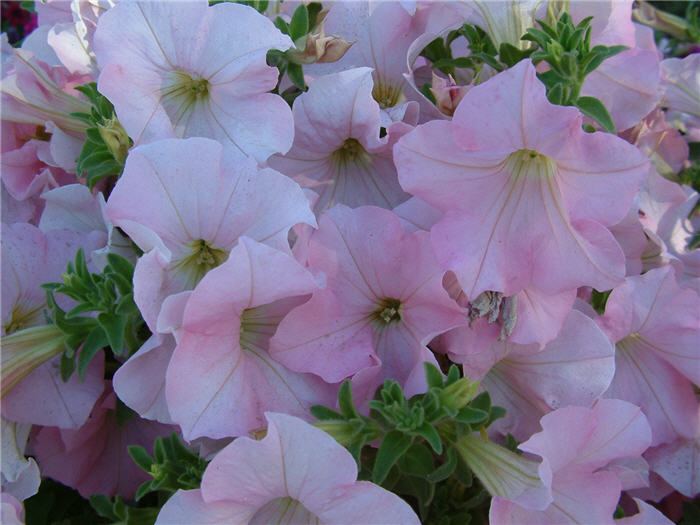| Botanical Name: Petunia X hybrida | |
| Common Name: Petunia |

-
Anatomy
-
Culture
-
Design
Plant Type
Annual
Height Range
Under 1'
Flower Color
Blue, Lavender, Orange, Pink, Purple, Red, Yellow, Violet, White, Multi-Colored
Flower Season
Spring, Summer
Leaf Color
Green
Bark Color
n/a
Fruit Color
n/a
Fruit Season
n/a
Sun
Full
Water
Medium
Growth Rate
Fast, Moderate
Soil Type
Sandy, Clay, Loam
Soil Condition
Average, Rich, Well-drained
Soil pH
Neutral
Adverse Factors
n/a
Design Styles
English Cottage, Formal, Ranch, Spanish, Tropical
Accenting Features
Showy Flowers
Seasonal Interest
Spring, Summer
Location Uses
Perennial Border, Patio, Raised Planter
Special Uses
Cascade, Container, Hanging Baskets
Attracts Wildlife
Hummingbirds
Information by: Stephanie Duer
Photographer: Modesto Jr. College
Photographer: Modesto Jr. College
-
Description
-
Notes
Its hard to think of summer annuals and not think of petunias. They come in a mind-boggling array of colors and color combinations, and may be single flowered, or ruffled like carnations. Habits are either clumping or trailing. Well suited to either bed planting or pot culture. They are also fragrant, and hummingbirds enjoy their nectar.
Grow in full sun in well draining, amended soil. Pinching off spent flowers will prolong bloom and if the plants get leggy, give them a trim. Feed with a complete fertilizer regularly. Avoid overhead watering as it may ruin the flowers. Petunias in hanging pots may need more frequent watering.